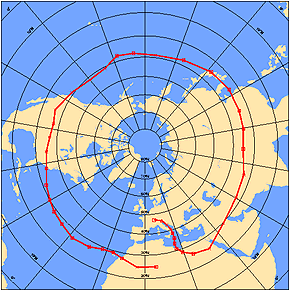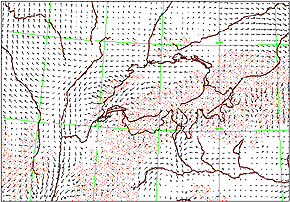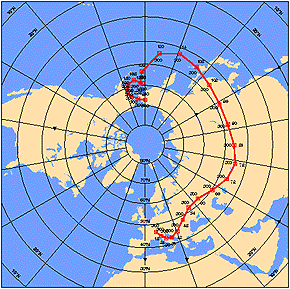 |

|

|

|
The concept Jet streams |
Contents |
The concept The itinerary |

|
| Example of a round the world in 10 days |

|
|
Click here to have the full image
|
| Example of a round the world in 20 days |

|
|
Click here to have the full image
|
The first task of the forecaster is to find a good start window from Château d'Oex. Following conditions must be fulfilled:
|
| Example of a 10 day forecast for the region of Château d'Oex |

|
|
Click here to have the full image
|
| Example of a local wind forecast on Switzerland |

|
|
Click here to have the full image
|
Once the balloon is launched, a permanent meteorological support is established at the control centre of the International Airport of Geneva. On a regular basis, the pilots are provided with advice on the best altitude to hold in order to go as fast as possible in direction of the East. To do so, we use the forecast winds at several altitudes my the numerical model of the Centre for Medium-range Weather Forecasts. The further computation of a trajectory takes into account both the spatial and temporal changes in the wind. |
| Example of a wind forecast at 9000 metres |

|
|
Click here to have the full image
|
| Example of a trajectory |

|
|
Click here to have the full image
|
The wind is not the only actor in the game. The other meteorological parameters present often a danger for the crew:
MeteoSwiss possesses a long a long experience in forecasting these phenomena for the regular flights and the private pilots leaving Switzerland for a variety of countries. This time again, for the Breitling Orbiter 3 project, the skill of our aeronautical briefing will be used in order to ensure the safety of Tony and Bertrand. |
| Example of a significant weather chart for the use of regular pilots mentioning the areas of turbulence, icing and thunderstorms |

|
|
Click here to have the full image
|
![]()

|
Jet streams The concept |
Contents |
The itinerary The concept |

|
